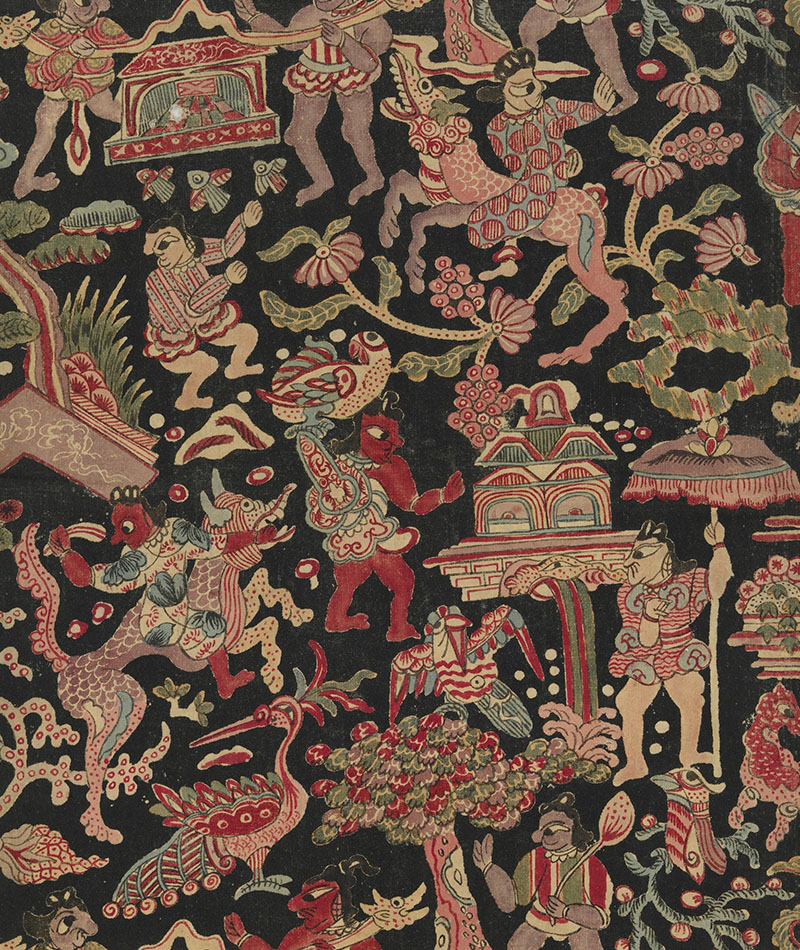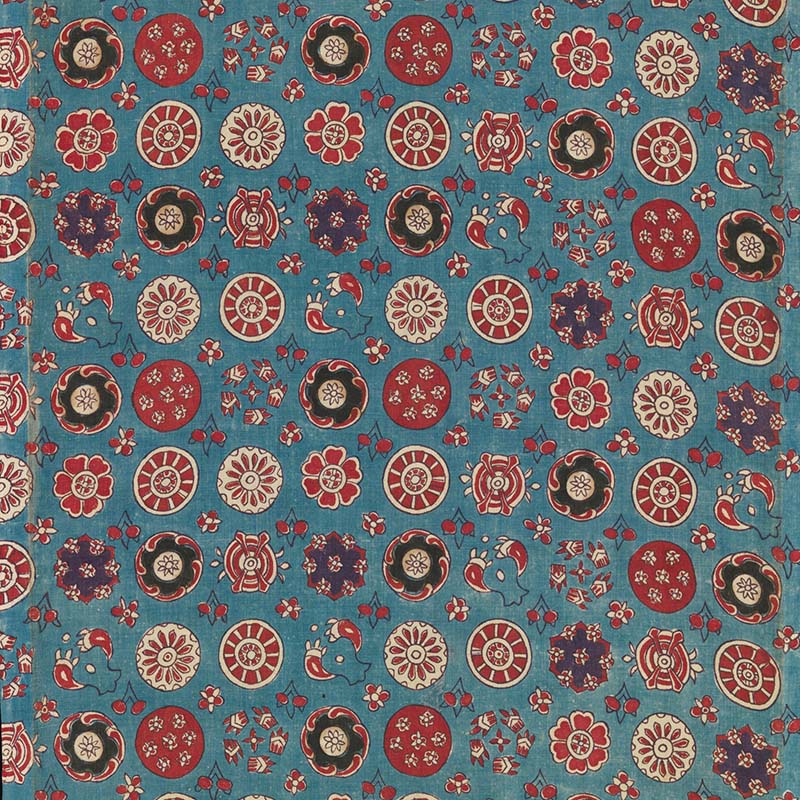ARTICLE
Sarasa
The Japanese believed that the Indian sarasa was imported from Siam (now Thailand), and therefore, early imitations, produced in Yamashiro Province, were known as shamuro zome, meaning “Siam dyeing.” However, the dyes used in these imitations would fade in the first wash. By the late Edo period in 1820, the Japanese import of sarasa ceased and imitations known as Japanese sarasa began to be used in Kyoto, Sakai and Nabeshima. These textiles were dyed using paper stencils, small woodblocks and dyes and hence, would not lose colour while washing. Also referred to as Edo sarasa, their production technique involved applying the traditional Japanese katazome (stencil dyeing) method to create complex patterns, gradations and undertones on silk using multiple colours.
Today, very few original examples of sarasas are left and are held in the collections of the Calico Museum of Textiles, Gujarat; the Tokyo National Museum; Rijksmuseum, Amsterdam; The Metropolitan Museum of Art, New York City; and the Los Angeles County Museum of Art.
Bibliography
Asian Art Newspaper. “Indian Chintz: A History,” August 26, 2020. https://asianartnewspaper.com/indian-chintz/.
Dascoli, Peter. “Seven Travelling Indian Motifs.” Livemint, August 12, 2017. https://www.livemint.com/Leisure/Cxiq6uEJUIpH35BKMHa8jK/Seven-travelling-Indian-motifs.html.
Kang, Cindy. “Interwoven Globe: The Worldwide Textile Trade, 1500–1800.” The Metropolitan Museum of Art, 2013.
https://journals.lib.unb.ca/index.php/mcr/article/view/24332/28177.
Sugimoto, Seiko. “Handkerchiefs, Scarves, Sarees and Cotton Printed Fabrics: Japanese Traders and Producers and the Challenges of Global Markets.” In Textile Trades, Consumer Cultures, and the Material Worlds of the Indian Ocean. Switzerland: Palgrave Macmillan, 2018.
Yuzuruha, Oyama. “The Textile Exchange Between Japan and India During the 16th and 19th Centuries.” Tokyo National Museum. Accessed September 21, 2021. https://mosai.org.in/wp-content/uploads/2019/09/Oyama_Yuzuruha_full-paper.pdf.








